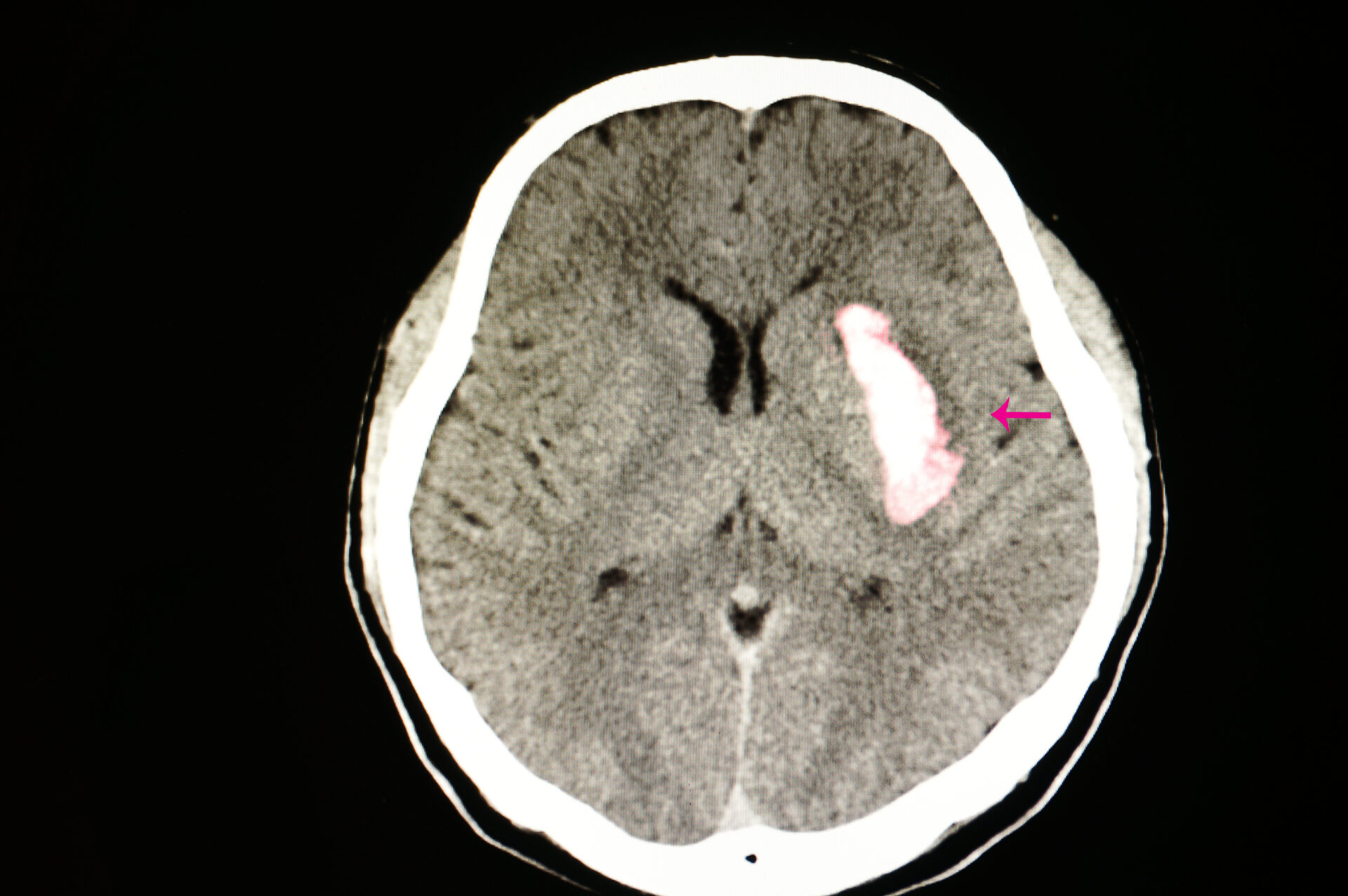Though often used interchangeably, brain hematomas and brain hemorrhages are not the same. A hemorrhage refers to active bleeding, while a hematoma is a collection of blood that typically forms after the bleeding has begun. This article explains their relationship and outlines common types of brain hemorrhages—including epidural, subdural, subarachnoid, intracerebral, and intraventricular—highlighting how each type affects the brain and why prompt medical care is essential.
In our past several articles, we’ve discussed brain hematomas: pools of blood that form in various places on the brain or the skull. Hematomas increase pressure on the brain and can be life-threatening if not treated immediately.
There’s another term that often gets confused with brain hematomas, though: brain hemorrhages, also called brain bleeds. While the two phenomena are directly related, there is a difference in their specific definitions.
This month, Georgia Neurosurgical Institute’s specialists are comparing brain hematomas to hemorrhages and sharing some information about various types of brain bleeds and the effects that can emerge from a hemorrhage inside the brain.
What Is a Hemorrhage?
A hemorrhage occurs whenever a blood vessel bursts or ruptures, allowing blood to flow freely out of the cardiovascular system and either into another part of the body or out of the body entirely.
When a hemorrhage causes blood to pool in a specific area of the body, that’s referred to as a hematoma. The hemorrhage and hematoma that most people have first-hand knowledge of are regular superficial bruising. When someone suffers a trauma—say, a hard blow to the upper arm—the capillaries and other small blood vessels at the impact site can rupture.
This rupturing allows blood to flow out of the blood vessels and into surrounding tissues – a hemorrhage. If that blood pools just below the skin, causing a purplish discoloration, the pooling is a hematoma. If, on the other hand, the impact also breaks the skin and the blood being released by the capillaries isn’t pooling under the skin, then there’s a hemorrhage, but no hematoma.
To summarize, all hematomas result from hemorrhages, but not all hemorrhages cause hematomas.
What Kinds of Brain Hemorrhages Exist?
Just as with hematomas, brain bleeds are named based on where in the brain or skull the hemorrhage occurs. The most common types include:
Epidural Hemorrhage
An epidural hemorrhage is a bleed that happens between the skull and the outer layer of the brain’s protective membranes. These hemorrhages are usually the result of an injury, particularly if the injury involves a skull fracture.
If left untreated, an epidural hemorrhage will develop into an epidural hematoma, which can put excessive pressure on the brain, causing difficulty breathing, a spike in blood pressure, and can lead to brain damage and death.
Subdural Hemorrhage
A subdural hemorrhage occurs when a blood vessel bursts or ruptures between the top two layers of the meninges, the thin layers of tissue surrounding and protecting the brain. In this case, blood leaks into the space between the dura mater (the outermost layer) and the arachnoid mater (the second layer).
A subdural hemorrhage almost always results in a subdural hematoma, which is a severe, life-threatening condition requiring immediate medical intervention.
Subarachnoid Hemorrhage
When blunt-force trauma to the head causes damage, the result is often a subarachnoid bleed, which is located between the second and third layers of the meninges (the arachnoid mater and the very delicate pia mater). Another common cause of subarachnoid hemorrhage is an aneurysm, or a rupture in a cranial blood vessel due to a weakening of the vessel walls.
Intracerebral Hemorrhage
In an intracerebral hemorrhage and subsequent intracerebral hematoma, a blood vessel within the brain itself ruptures and causes blood to pool inside the brain. This specific type of hemorrhage is the second most common cause of strokes and is usually caused by uncontrolled hypertension damaging the blood vessels in the brain.

Intraventricular Hemorrhage
These hemorrhages are most commonly seen in premature babies, particularly in infants with a birth weight below 3 pounds, 5 ounces. In an intraventricular hemorrhage, bleeding occurs within the ventricles of the brain – the fluid-filled spaces inside the brain that contain cerebrospinal fluid (CSF).
When a rupture or fault in a blood vessel causes blood to enter the ventricles, the excess fluid can cause intense pressure on the nerve tissue inside the brain, leading to nerve and brain damage.
Cranial hemorrhages and brain hematomas are serious events that Georgia Neurosurgical Institute is prepared to treat.
The neurosurgeons and team at Georgia Neurosurgical Institute are highly trained and experienced in treating hematomas on the brain with careful precision. The brain is the most important organ in the body—when something happens to risk its function, our team is here to treat the problem swiftly and skillfully. Your head is in good hands when you turn to our practice.
Schedule a consultation with Georgia Neurosurgical Institute today: 478-743-7092
Georgia Neurosurgical Institute offers exceptional treatments for the brain and spine to patients throughout Middle Georgia. With offices in Macon and satellite locations in Dublin, Locust Grove, and Warner Robins, we’re able to treat patients in and around:
- Dublin
- Forsyth
- Locust Grove
- Macon
- McDonough
- Milledgeville
- Perry
- Warner Robins
Recent Articles







